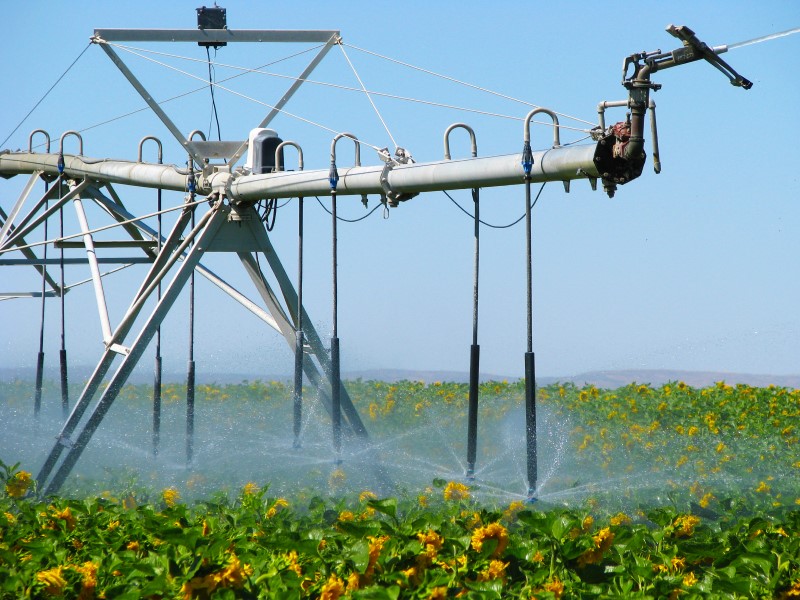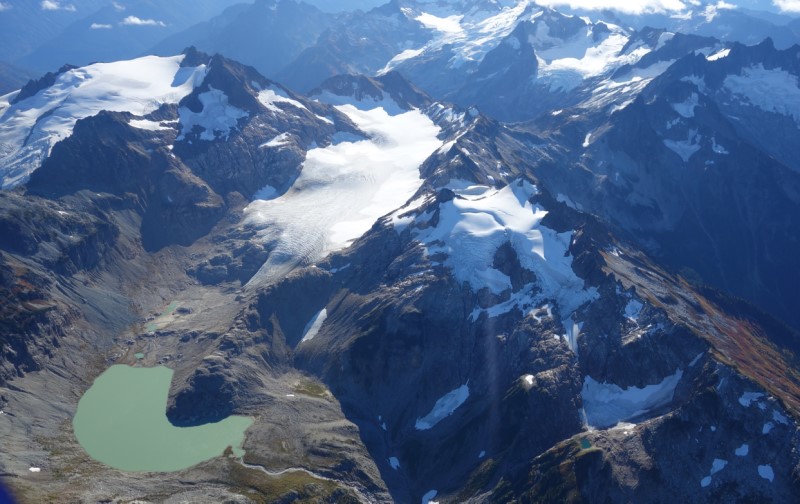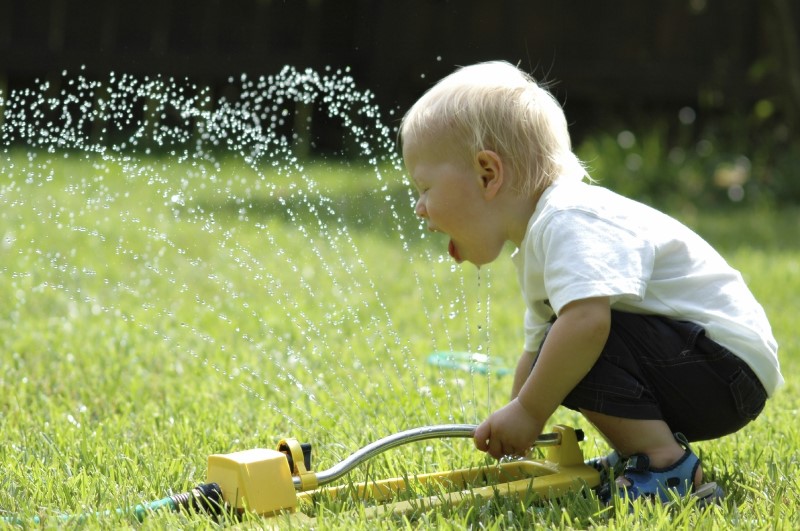
Columbia Basin sunflowers under irrigation. Sustainable water supplies have made agriculture a $10 billion industry. (Credit: Tom Perkow, Dept. of Ecology)
Cool, clean drinking water. Productive irrigation of farmers’ fields. Lakes and streams that supply water for people, recreation, and fish habitat. All of these things are due to successful water management in Washington.
The state’s lengthy and colorful history of water law and water use regulations began long before the Department of Ecology was created in 1970 and water management work consolidated under Ecology’s Water Resources Program. Since then, the goal has been to ensure an adequate supply of water for people, farms and fish.
A finite resource breeds competition
More than 70%25 of the runoff that feeds Washington rivers and streams comes from snowmelt.
Given water’s essential nature, it’s no surprise that competition for this limited resource was the norm for decades. As Mark Twain supposedly said, “Whiskey is for drinking; water is for fighting over.”
In fact, we have the same amount of water now as when the Earth was formed — and 97% of it is salt water. If all of the Earth’s water fit in a gallon container, only half a cup would be fresh water!
Water rights were based on mining law
In the 1800s, there was no regulation of water use in the Western U.S., no rules on how you could use it or where you could get it. Settlers took the water from rivers and streams when and where they wanted it.
Getting access to water in the West — including the Washington territory — was modeled on mining law. You claimed a source of water as your own, just like you staked a claim to gold and other minerals. You just posted your claim to the water in a river or stream by placing a notice on a pole, or even a tree.
Growing demands for water prompted passage of Water Code
By the early 1900s, conflicts over the use of water were increasing as growing population centers and expanding industry and agriculture increased the demand for water.
In 1905, members of a Central Washington irrigation district tried to dynamite an irrigation company’s dam. A local newspaper reported that the dam owner said, “The water … was ours by right of appropriation and storage.”
Aiming to give everyone access to water and to protect future supplies, the Washington Legislature passed the Washington Water Code in 1917.
The code established “prior appropriation” as the means for establishing rights to surface water — rivers, streams, springs or lakes. Under prior appropriation, anyone applying for and receiving a water right first has priority over those applying later. This is the tenet of water law known as “first in time, first in right.”
A few decades later, the Legislature adopted protection for groundwater in the form of the Groundwater Code of 1945. Water for recreation — and drinking — are important benefits of smart water management.
The code also recognized the importance of rural water wells. Although municipal water systems provide 80% of the state’s population with drinking water, many rural residents rely on wells for their home, farming, and livestock needs. Over the past century, hundreds of thousands of water wells have been drilled in Washington, and, since 1945, those supplying 5,000 gallons or less of water a day for domestic purposes don’t require a permit.
Safeguarding a sustainable future
With the surface water code and the groundwater code, Washington law ensures that holders of the oldest water rights in the state will have water for their homes, businesses, and farms.
When our agency was established 50 years ago, the water law in place was based on the concept that the water resources of Washington are owned in common by the citizens of the state and are regulated for the beneficial use of the general public.
From regulating well drilling to permitting reservoirs, more than 100 years of water law and smart water management has given Washington the means to protect and expand water supplies.
In recent decades, Ecology has built sustainable water supplies by working with our partners in local governments, tribes, irrigation districts, and state and federal agencies.
For example, since 2006 Ecology’s Office of Columbia River has developed 413,845 acre-feet of water supplies to both maintain streamflow levels for fish and other aquatic life, as well as for out-of-stream water uses in the Columbia River Basin. (An acre-foot equals 325,851 gallons of water.)
Adequate water supplies are the foundation of an agricultural industry that contributes more than $10 billion annually to Washington’s economy.
In the future, a key challenge will be coping with the impacts of climate change, such as droughts, on water resources in a state where much of the supply comes from snowmelt runoff.
Tracking Washington’s 230,000 active water rights, regulating water use, inspecting dams and reservoirs, and developing new water supplies represent Ecology’s ongoing commitment to ensuring future generations will have the water they need.



